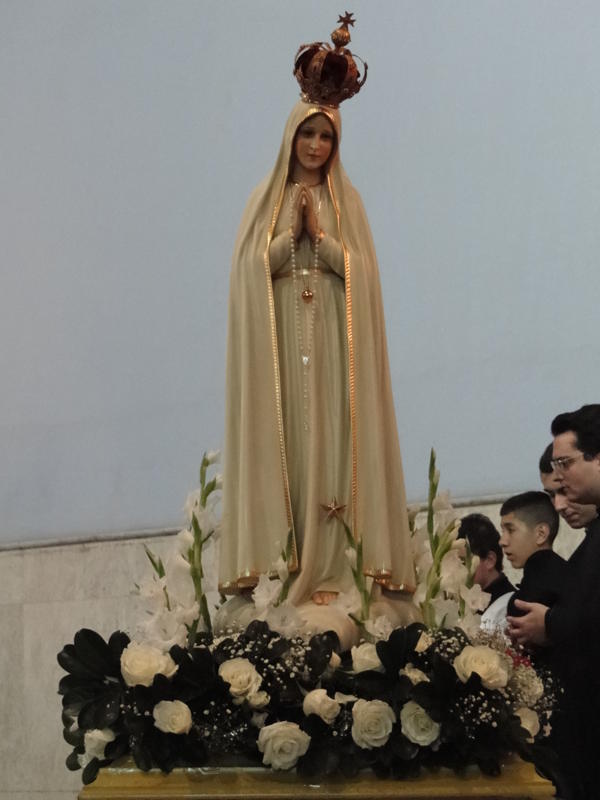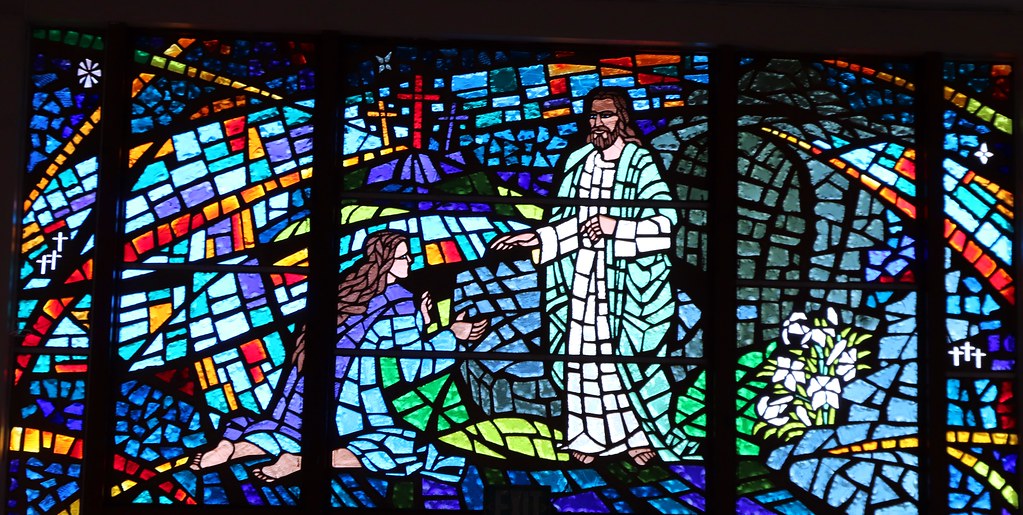|
Today, May 13th, 2019, marks the 102th anniversary of Mary's apparition to 3 small shepherd children in Fatima, Portugal. Like most Marian apparitions, it took place in an obscure location, to some relatively unimportant people, at least by worldly standards. Yet, like the mustard seed, this apparition grew and grew until it became known worldwide, transcending time and space.
The 3 children were engaged one ordinary day in their regular chore of tending the sheep. They would later say that before Mary visited them, an angel who identified himself as the "Angel of Peace" and the "Guardian Angel of Portugal" appeared to them 3 times to teach them prayers and invite them to offer sacrifices and spend time in adoration of our Lord. He was preparing them to receive an even greater visitor, Mary, the Mother of God. Over the course of several months, Mary gave the children 3 secrets, all of which were eventually revealed. The first secret was a vision of hell. The second secret revealed a desire by God to establish a devotion to the Immaculate Heart of Mary. Through this devotion, Mary promised to save souls and bring peace to the world, all through her ability to intercede for us before God. The third and final secret had to do with the death of a pope and other religious figures. Most people think that this event was attempted but not completed in the assassination attempt on Pope St. John Paul II. He himself said he believed his life had saved through Mary's intercession. Many good and worthwhile books and commentaries have been written about Fatima, and it is a subject worth learning about. Rather than try to summarize the Fatima story here, I would like to point you to some reliable sources for reading about it. It takes a while to work through the events of the apparition and to listen to Mary's message at the same time. The small book The True Story of Fatima is a good place to start. Ignatius Press also published a book called Fatima Mysteries: Mary's Message to the Modern Age, and I also recommend William Walsh's book Our Lady of Fatima. Although the title usually given to Mary for this apparition is Our Lady of Fatima, her official title is Our Lady of the Holy Rosary at Fatima. That name change makes a big difference. Calling Mary Our Lady of Fatima emphasizes the secrets and the supernatural aspect of Fatima. These are indeed notable, to be sure, but they can also become overwhelming. Remembering that Mary is actually named Our Lady of the Holy Rosary at Fatima gets to the heart of the message. It enables us to carry out the message that Mary relayed - Pray, offer sacrifices and repent. In other words, get out your rosary beads. The solution to war, strife and suffering - literally- lies in your own hands. It is not beyond reach, or too high above us. It is in the humble act of daily prayer. It is helpful to remember the words of Pope Pius XII who said ""The gates of hell will never prevail, where Mary offers her protection. She is the good mother, the mother of all, and it has never been heard, that those who seek her protection, will not receive it. She will help! Error will be overcome with her assistance and divine grace." Holy Mary, Mother of God, pray for us now and at the hour of our death.
0 Comments
Have you heard about the Stations of the Resurrection? Also referred to as the Via Lucis - or Way of Light - this devotion was first created in 1988 by Fr. Sabino Palumbieri, from the Salesian University in Rome. The devotion consists of 14 stations, and follows the appearances of Jesus after his resurrection. First publically performed in 1990, the Stations of the Resurrection have gained popularity as a way of meditating on the joy and hope brought about by the resurrection. In 2001, the Vatican commended the Via Lucis by saying:
"A pious exercise called the Via Lucis has developed and spread to many regions in recent years. Following the model of the Via Crucis, the faithful process while meditating on the various appearances of Jesus – from his Resurrection to his Ascension – in which he showed his glory to the disciples who awaited the coming of the Holy Spirit (cf. John 14, 26; 16, 13-15; Lk 24, 49), strengthened their faith, brought to completion his teaching on the Kingdom and more closely defined the sacramental and hierarchical structure of the Church. Through the Via Lucis, the faithful recall the central event of the faith – the resurrection of Christ – and their discipleship in virtue of Baptism, the paschal sacrament by which they have passed from the darkness of sin to the bright radiance of the light of grace (cf. Col 1, 13; Eph 5, 8)" The Stations of the Resurrection help us to move from the experience of suffering, pain and death to the hope, joy and life of the resurrection, which is the promise of our faith. The Stations are generally arranged into the 14 stations below, but there are variations.
Today, May 1, is the Feast Day of St. Joseph the Worker. This is a truly beautiful feast day, in that it takes honest, simple work and raises it as an offering to God. The statue above was sent to me to review by the folks at Holyart.com, and I used it during Lent on my St. Joseph's Altar. But since it depicts St. Joseph the Worker, I thought it would be appropriate to look at it again.
The necessity of work has been around since the creation of Adam and Eve. In fact, even in the Garden of Eden, before the fall, Adam had work to do. Yes, he had some jobs in that garden! According to Genesis 2:15, God settled Adam in the garden to "care and cultivate it." Of course, the big difference between doing work before the fall and doing work after the fall is the effort involved, as well as the fruit that resulted from it. Before the fall, Adam's work was enjoyable and fruitful. Everything went well, according to plan and as it should. That experience of work changes after the fall. Scripture relates that God tells Adam that only by toil (a new word) shall you eat, "by the sweat of your brow you shall eat bread, until you return to the ground from which you were taken." (Genesis 3:17, 19) So, work is inescapable. It is part of the human condition. As St. Paul reaffirms later on "He who does not work, shall not eat." (2 Thess 3:10) In his document Laborem Exercens, Pope St. John Paul II writes "Work is one of the characteristics that distinguishes man from the rest of creatures." But, work is more than just putting our nose to the grindstone and toiling away for mere survival, year after year. Now, because of the descent of the Holy Spirit, our work enables us to be co-creators with God as we participate with the Holy Spirit in building the Kingdom. Our occupation becomes part of our vocation. This is what the statue of St. Joseph shows us. On the surface, St. Joseph was a humble, ordinary carpenter who didn't make much money in his lifetime and likely worked very hard every day, sun up to sun down. He shouldered the financial burden of the family and labored to keep them safe and sheltered. But that was just a part of his life. In reality, his occupation supported his vocation, which was to be the foster father of Jesus and spouse of the Virgin Mary. He was - quite literally - building the Kingdom of God in his home, while he built tables and chairs in his workshop. And that is what we are all called to do. Regardless of whether our occupation is full of prestige or like St. Joseph's - honest and simple, our occupations should be at the service of our vocations, not the other way around. And everyone's vocation, ultimately, is to build the Kingdom of God. |
The BlogDisclaimer:
The images on this website are either my own or are used under the Creative Commons license. No images have been edited, shared, or adapted. A link to each work that I do not own is provided at the bottom of the page. CC License: Archives
March 2024
Categories
All
|






 RSS Feed
RSS Feed
